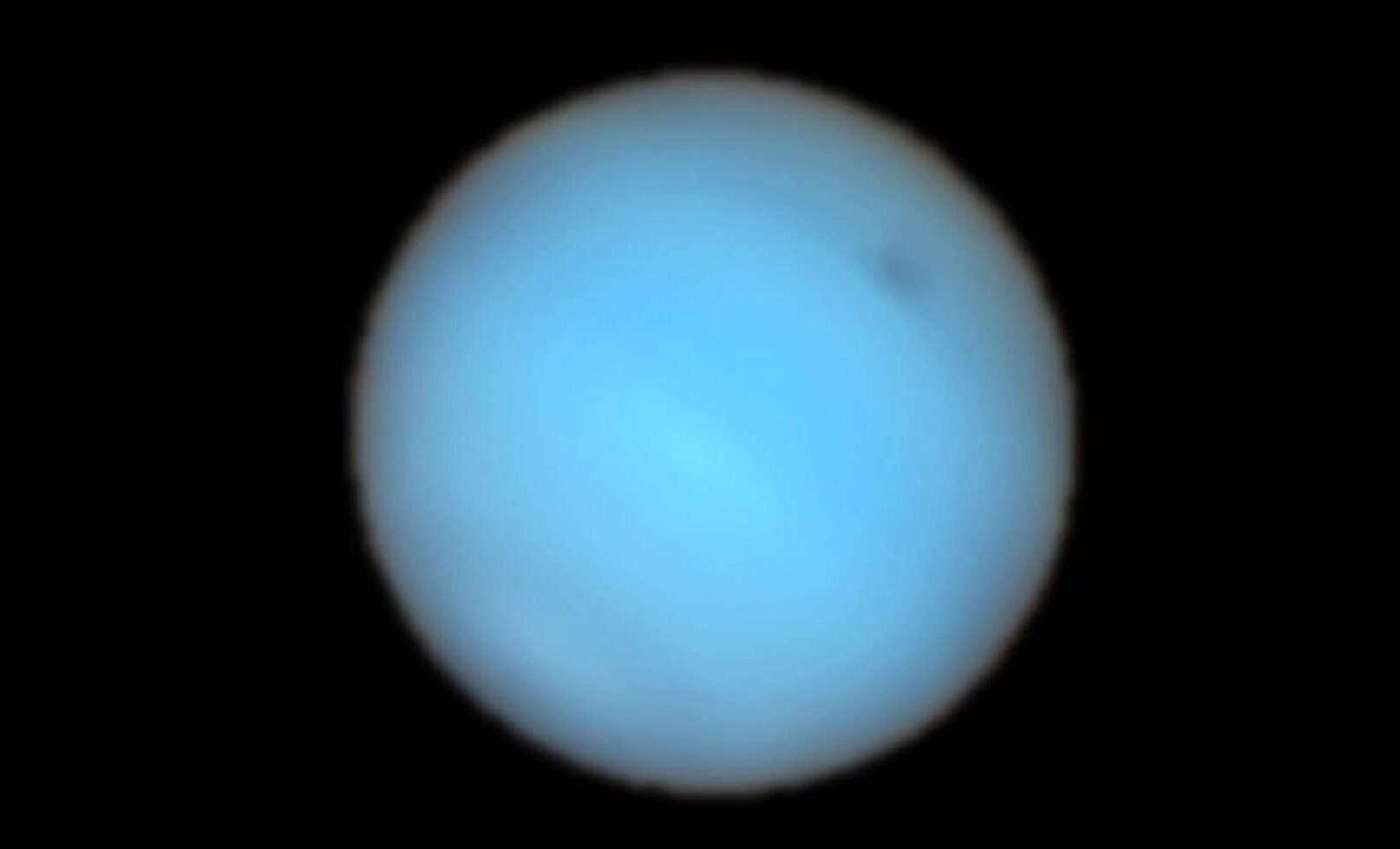An enigmatic dark spot on Neptune, visible from Earth, puzzles astronomers as it challenges existing knowledge.
Introduction:
In an astonishing breakthrough, astronomers have observed an inexplicable dark spot on Neptune’s surface using the European Southern Observatory’s (ESO) Very Large Telescope (VLT). This enigma is further compounded by the presence of an unexpected smaller bright spot adjacent to it, marking a significant leap in humanity’s cosmic observation capabilities.
Unveiling Neptune’s Enigma:
While dark spots have been identified on the planet before, this is the first time they have been detected from Earth. These sporadic anomalies, residing against the planet’s serene blue backdrop, have baffled astronomers for years, prompting rigorous investigation into their origin and characteristics.
A Quantum Leap in Observational Prowess:
Michael Wong, co-author and researcher at the University of California, Berkeley, lauded the breakthrough, highlighting the exponential growth in humanity’s cosmic observation capability. He emphasized that previous methods of detection, like spacecraft and the Hubble Telescope, have now been complemented by ground-based observations enabled by evolving technology.
Dark Spots and Planetary Dynamics:
Large dark spots are not alien to the atmospheres of massive planets, with Jupiter’s Great Red Spot being the most prominent example. However, the emergence of dark spots on Neptune’s surface has long puzzled experts. The initial discovery dates back to 1989 when NASA’s Voyager 2 captured the phenomenon. Yet, their transient nature and elusive characteristics continued to perplex scientists.
Unraveling the Enigma:
Recent research harnessed the power of the VLT to shed light on the perplexing phenomenon. Contrary to previous assumptions, observations dismissed the possibility of the dark spots being caused by cloud clearings. Instead, these findings suggest that the dark spots may emerge due to the darkening of air particles in a layer beneath the main visible haze, created as ice and hazes mix within Neptune’s atmosphere.
Breakthrough through Advanced Observations:
The breakthrough emerged after NASA and the European Space Agency’s Hubble Space Telescope detected multiple dark spots in Neptune’s atmosphere, including one in the northern hemisphere spotted in 2018. The VLT’s Multi Unit Spectroscopic Explorer (Muse) instrument allowed researchers to dissect reflected sunlight from Neptune and its dark spot, enabling a more comprehensive analysis.
Unveiling an Unforeseen Revelation:
Interestingly, the detailed observations brought forth an unforeseen revelation—an exceedingly rare deep bright cloud, hitherto unidentified even from space. This extraordinary cloud type manifested as a bright entity adjacent to the main dark spot. Notably, this new cloud occupies the same atmospheric level as the primary dark spot, differentiating it from the previously observed high-altitude methane ice companion clouds.
Conclusion:
The newfound understanding of Neptune’s mysterious dark spots, facilitated by the cutting-edge capabilities of the VLT, marks a pivotal moment in astronomical research. As astronomers continue to decode the intricacies of these transient features, the scientific community eagerly awaits further revelations that may transform our comprehension of the dynamics within distant planetary atmospheres.









